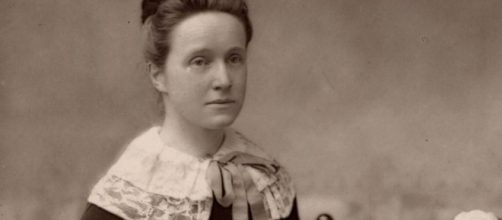Millicent Garrett Fawcett is to get a statue outside parliament, the first woman to do so. Her achievements and documentations of the women's suffrage period in the 19th and 20th centuries were compelling. The role she played in the suffragist movement were exemplary and monumental, but the eloquence in which she wrote about the history of the movement is perhaps what stands her out from the rest. Millicent Fawcett would be as proud of this achievement for the fight for equality as the many she saw and fought for throughout her life.
There have been many great women throughout history and the women’s suffrage movement had them in abundance.
Nonetheless, Millicent Fawcett stands out from her peers and this statue will represent further progress in the continued fight for gender equality.
Early life and inspiration
Born to a family of Ironworkers, Fawcett's father owned a pawnbroker in Whitechapel but they eventually moved after her uncle inherited her grandfather's engineering works, Richard Garrett and Sons. She grew up in Suffolk, where the engineering works was based, then when she was 12, Millicent was sent to London with her sister, Elizabeth Garrett Anderson (first female doctor in Britain), to be educated at a Miss Browning's private school in Blackheath. This is where she was inspired by MP John Stuart Mill, an early advocate of women's suffrage.
She spent much of her time in London and met radical MP John Stuart Mill, whom she admired for his practical utilitarianism support of women's rights rather than abstract principles, along with her eventual husband, Liberal MP, reformer, and professor of economics at Cambridge University, Henry Fawcett. Throughout her life she became a key figure in women's suffrage even though her primary focus was improving women's education opportunities and in 1871 co-founded Newham College in Cambridge.
Tireless and passionate
Millicent was a tireless campaigner who took a moderate line to women's suffrage, also juggled being a writer, political secretary and a supportive wife after Henry was blinded in a shooting accident.
Millicent was a radical who flirted with republicanism, supported proportional representation, trade unionism, keenly advocated individualistic and free trade principles. She was long overshadowed by her more militant contemporaries in the Women's Social and Political Union (WPSU).
She was against the militant activity but provoked the idea that the violence towards women's rights campaigners was far worse than any 'militant' activity by a minority of suffragists. During which time, minor breaches of law such as flag waving were treated with more severity than worse crimes committed by men (Garrett Fawcett, 1912). She also highlighted the turning of the hose upon a suffrage prisoner on a midwinters night and the force feeding of prisoners who were on hunger strikes as turning points in the fight for women's suffrage.
She continued to fight for women's suffrage throughout and supported W.T. Stead's expose of the slave trade. She was a moral advocate of the Contagious Diseases Act and in the 1870s, supported the several Reform Bills that when through the Commons, despite the failed attempts of adding Women's Suffrage Amendments, progress was slowly being made. Millicent was such a prominence figure in British political life, she was asked to conduct an official report on the use of concentration camps during the Boer War after Emily Hobhouse's damning unofficial report. She produced a balanced and detailed report to parliament confirming the conclusion's from Hobhouse's report.
Women's suffrage united
In the 1890s, she began to unite the women's suffrage movements across the country and in 1897 became president of the National Union of Women's Suffrage Societies (NUWSS), the umbrella corporation that linked every suffrage society across the country.
Through this she continued to fight behind the scenes during World War I, pushing for reforms in parliament after the war. However, did agree to suspend campaigning efforts to assist the wartime effort, she was convinced that the role played by women during the war would assist the suffrage effort.
Her faith was repaid when in 1919, the passage of the Representation of People Act 1918 had given the vote to women over 30, after which she resigned from her position as president of the NUWSS but continued to work with and support during campaigns to lower the voting age of women from 30 to 21. She died in 1929 aged 82, a year after the voting age for women was lowered to 21 in 1928. Despite her strong willed public image, she always had private doubts whether women would be enfranchised during her lifetime.

